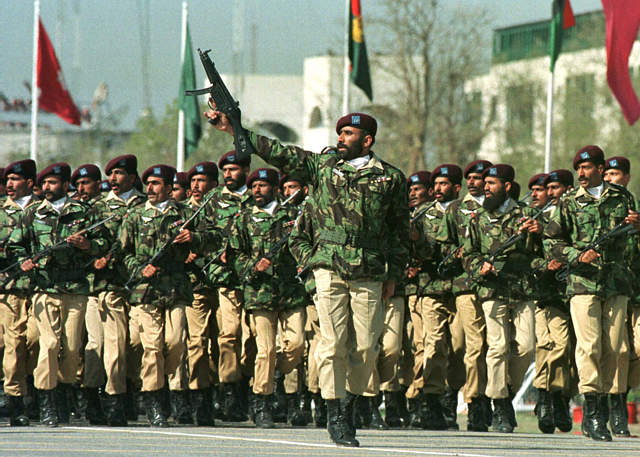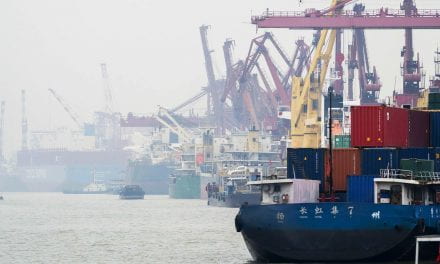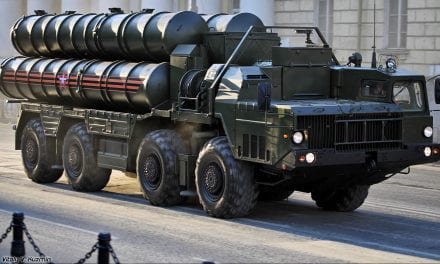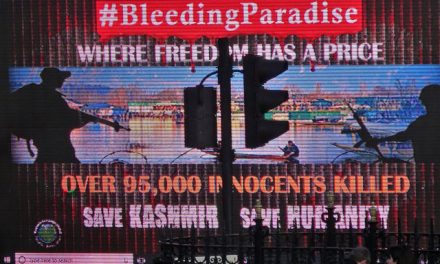By: Usjid Hameed*
In March of 2017, news broke of Pakistan’s decision to send troops to Saudi Arabia’s southern border to protect against potential Houthi attacks from the failed state of Yemen. [1] The Houthis, a Shia insurgent group believed to be backed by Iran, seized control of Sana’a, the Yemeni capital in 2014. Saudi Arabia, which shares an extended border with Yemen, began a bombing campaign in 2015 to quell the insurgency to its South. Given the conflictual state of relations between Riyadh and Tehran, any other outcome besides Houthi defeat is unacceptable for Saudi Arabia. The choice to send troops is a slight break with the Pakistani Parliament’s decision in 2015 to remain militarily uninvolved in the Yemeni conflict in favor of a diplomatic solution despite Saudi attempts to coax Islamabad into a more aggressive posture against the Houthi insurgency. [2] This article examines past Pakistani involvement in the Middle East and argues that Pakistan’s decision to come to the aid of Saudi Arabia in 2017, rather than 2015, was motivated by shifting concerns regarding threats from terrorism and the desire to preserve its relationship with Iran, a predominantly Shia state. The aim of Pakistan, a predominantly Sunni state, to partner with Tehran is especially significant because it indicates its lack of concern for sectarian differences in name of furthering its energy interests.
An Unknown Influence
Unknown to many, Pakistan’s army has been one of the most influential fighting forces in the Middle East since WWII. Its involvement began when, under the British Indian Army, Muslim troops were used to pacify hostile Arab Muslims all throughout the region, including in cities such as Jerusalem, Damascus, and Baghdad. [3] These same Muslim troops, who had experience in the region and rapport with Arab actors, became the founders of the Pakistani Army in the 1940’s thus setting the stage for the relationships which exist today. Pakistan has trained more Arab armies than any other country, played a combat role in the Arab Israeli wars of 1967 and 1973, and provided mentorship for the Gulf countries’ armies during their founding. [4]
The ties between Islamabad and Riyadh, especially, are critical. One Saudi intelligence officer deemed the partnership “probably one of the closest relationships in the world between any two countries.” [5] Islamabad’s and Riyadh’s commitment to Islam and threats from regional neighbors have contributed to the development of their relationship. In the 1960’s, Pakistan assisted the Royal Saudi Air Force in building and piloting its first jet fighters. In addition, “Pakistani Air Force pilots flew RSAF Lightnings that repulsed a South Yemeni incursion into the kingdom’s southern border in 1969. In the 1970s and 1980s, up to 15,000 Pakistani troops were stationed in the kingdom, some in a brigade combat force near the Israeli-Jordanian-Saudi border.” [6] There was also a detachment of thousands of Pakistani soldiers in Saudi territory until the First Gulf War.
Interestingly, Islamabad, while a stringent supporter of Riyadh, has skillfully maintained cordial relations with Tehran Saudi Arabia’s regional rival and Pakistan’s neighbor. For example, Pakistan played a leading role in mediating the end to the brutal Iran-Iraq war in the 1980’s. The late Iranian President, Akbar Hashemi Rafsanjani, was reportedly very appreciative of Pakistani support in the matter.
Over the years, Saudi Arabia has come to the aid of Pakistan as well. Most famously, Riyadh funneled money and supplies through Pakistan to the Mujahideen to fend off the Soviet invasion of Afghanistan in the 1980’s. At a personal level, the Saudi government gave current Pakistani Prime Minister Nawaz Sharif sanctuary following his ouster in a military coup in 2000. More recently, “Saudi Arabia loaned $1.5 billion to Pakistan last month to help Islamabad shore up its foreign exchange reserves, meet debt-service obligations and undertake large energy and infrastructure projects.” [7]
A ‘No-Go’ in 2015
Despite the close relationship between Riyadh and Islamabad, in 2015, Pakistan rebuffed Saudi Arabia’s call to play a military role in the Yemeni conflict, a sharp break in their history of cooperation. The refusal to do so illustrated Islamabad’s recognition of the many challenges it faced at the time, one of which was the threat posed by militants, among them the Taliban, along the North-West Afghan border. Committing troops to Yemen would have spread Pakistani forces too thin as a campaign was underway to root out and eliminate said militants. Concerns about terrorism grew more dire following the Taliban attack upon a school in the North-Western city of Peshawar in 2014, which took the lives of 150 innocents, most of whom were children. Shortly following the attack, the Pakistani government released a 20-point National Action plan to “confront the militants, curb their hate speeches, control their religious seminaries and cut their finances” with the hopes of decreasing violence from terror groups. [9]
Preserving relations with the predominantly Shia Tehran, which it has done historically, was another reason for Islamabad’s strict neutrality in Yemen in 2015. Islamabad calculated that acting in an overtly military role in support of Riyadh, against the Iranian supported Houthis, could sour future prospects for energy sharing opportunities with Tehran. Pakistan is a severely energy starved country, experiencing regular rolling blackouts. Iran, in contrast, has large hydrocarbon reserves and was in the process of completing the potential sanction-ending nuclear deal with the U.S. when Riyadh requested Islamabad’s assistance in Yemen [10] Although Islamabad and Tehran were unsuccessful in their past efforts to construct oil and gas pipelines, Pakistan saw great opportunity in future attempts to engage a nuclear-constrained Iran with the hopes of remedying its own energy shortcomings. Thus, Pakistan chose not to come to the aid of Saudi Arabia, realizing that it had much to gain from a partnership with a nuclear-constrained Tehran.
A Tentative ‘Yes’ in 2017
By contrast, Pakistan’s decision to send troops to Saudi Arabia’s aid in 2017 was motivated by two factors. First, Islamabad feels that threats to its domestic security have been well enough quelled that it can afford to send forces abroad. Although Pakistan’s anti-terror campaign, including the implementation of the 20-point National Action plan, has drawn criticism from human rights groups for various reasons, including its proclivity for large numbers of executions, it has decreased violence in the country. For example, Pakistan saw a drop in violent fatalities “from 7,611 in 2014 to 4,653 in 2015” while data from the first three quarters of 2016 illustrated a sharp and continuous decline “with 2,061 people losing their lives to violence in the last three quarters, and each quarter less violent than the one prior.” [11] In addition, sectarian violence saw a reduction by more than 50% with 147 deaths occurring in the first three quarters of 2016 in comparison with 616 deaths in 2013. [12] Thus, a more internally stable Pakistan in 2017 allows its military to project its power abroad, something it could not do in 2015 when Riyadh initially asked Islamabad to come to its aid.
The second reason Islamabad decided to play a more active in the Yemeni conflict is its calculation that the Pakistani-Iranian relationship will not suffer as a consequence of it doing so. It is vital to note that the Pakistani troops sent to Saudi Arabia will reportedly “‘not be used beyond Saudi borders.’” [13] The action, although militaristic in nature, is still much more defensive than the original Saudi request made in 2015 for Pakistan to play an overt military role. The defensive posture of Pakistan’s troop deployment signals its primary desire to defend Saudi Arabia against potential attacks, not to roll back Houthi gains in Yemen. Hence, the deployment does not conflict with Iranian objectives for increased influence in Yemen.
In addition, relations between Pakistan and Iran are much stronger today than they were in 2015. A sanction-free Iran has access to many more resources and so is a vital trading partner for Pakistan. In March 2016, leaders from both countries met in Islamabad to engage in talks which focused on “increasing Pakistan’s electricity imports from Iran, boosting trade relations and reviving plans for a gas pipeline between the two countries.” [14] Additionally, both countries agreed to increase their annual trade volume to $5 billion by 2021.
The Pakistani-Iranian partnership is further buttressed by another major power in Asia, China, which has much to gain from the success of the relationship. Beijing and Islamabad are closely tied economically thanks to the $46 billion China-Pakistan Economic Corridor (CPEC) project which seeks to connect Xinjiang in China to Gwadar in Pakistan by engaging in development projects including roads and railways. [15] In October 2016, China welcomed the prospect of Iranian cooperation in the ambitious endeavor, with the hopes of gaining access to oil-rich Middle Eastern countries and offsetting the U.S.’s historical advantage in the region. [16] Beijing also has offered to loan Islamabad 85% of the required funding for its part of the proposed gas pipeline between Pakistan and Iran. The pipeline benefits Islamabad, Tehran, and Beijing as the “Pakistani section of the pipeline will intersect Gwadar where China maintains an important presence… it could…[deliver] Iranian natural gas to China without the use of vulnerable sea lanes.” [17]
Conclusion
Surrounded by powerful and sometimes hostile neighbors, Pakistan is no stranger to exercising a pragmatic foreign policy. When first approached by its longtime ally, Riyadh, to intervene in Yemen in 2015, Islamabad felt the negative outcomes of doing so would outweigh the positive. A rampant domestic terror problem coupled with the risk of upsetting Iran led Pakistan to decline the Saudi request. Two years later, with a more secure, domestic situation and financially prosperous and robust partnership with Tehran, Islamabad recognized that intervening in a strictly defensive manner would not harm its interests. It remains to be seen how long Pakistan will be able to continue its balancing act in the Middle East with the current tensions between Iran and Saudi Arabia. Moreover, Sunni Islamabad’s partnership with Shia Tehran indicates that, despite the commonly held belief, Muslim states are not dictated solely by sectarian divide. Muslim leaders will act in accordance with what their states’ interests. History has shown that with each new challenge, Islamabad will be practical, acting in a manner which serves not only its interests today, but serves its interests tomorrow as well, regardless of sectarian divide.
________________________________________________________________________
- David Hearst. “EXCLUSIVE: Pakistan sends combat troops to southern Saudi border.” Middle East Eye. March 13, 2017. Accessed March 24, 2017. http://www.middleeasteye.net/news/exclusive-pakistan-sends-combat-troops-saudi-southern-border-248886071.
- “Yemen conflict: Pakistan rebuffs Saudi coalition call.” BBC News. April 10, 2015. Accessed March 24, 2017. http://www.bbc.com/news/world-asia-32246547.
- Kamal Alam. “Asia’s quiet superpower: Pakistan Army’s teetering balance between Saudi and Iran.” Middle East Eye. March 2, 2017. Accessed March 24, 2017. http://www.middleeasteye.net/columns/asias-quiet-superpower-pakistan-army-s-teetering-balance-between-saudi-and-iran-903452261.
- “Asia’s quiet superpower.”
- Ishaan Tharoor. “Pakistan’s long history of fighting Saudi Arabia’s wars.” The Washington Post. March 27, 2015. Accessed March 24, 2017. https://www.washingtonpost.com/news/worldviews/wp/2015/03/27/pakistans-long-history-of-fighting-saudi-arabias-wars/?utm_term=.51a8b5395fa4.
- “Pakistan’s long history.”
- Mehreen Zahra-Malik. “Saudi Arabia loans Pakistan $1.5 billion to shore up economy.” Reuters. March 13, 2014. Accessed March 26, 2017. http://www.reuters.com/article/us-pakistan-saudi-idUSBREA2C13G20140313.
- Louis Ritzinger, Daniel L. Davis, Richard Javad Heydarian, and Douglas Macgregor. “Why Pakistan Is Staying Out of Yemen.” The National Interest. April 27, 2017. Accessed March 26, 2017. http://nationalinterest.org/feature/why-pakistan-staying-out-yemen-12730?page=2.
- Owen Bennett-Jones. “Does the military still control Pakistan?” BBC News. September 28, 2015. Accessed March 26, 2017. http://www.bbc.com/news/world-asia-34333470.
- Ritzinger, Davis, Heydarian, and Douglass. “Why Pakistan.”
- Zeeshan Salahuddin. “Is Pakistan’s National Action Plan Actually Working?” The Diplomat. December 25, 2016. Accessed March 26, 2017. http://thediplomat.com/2016/12/is-pakistans-national-action-plan-actually-working/.
- “Is Pakistan’s National Action Plan.”
- “EXCLUSIVE: Pakistan sends.”
- Mehreen Zahra-Malik. “Pakistan, Iran aim to boost trade to $5 billion.” Reuters. March 26, 2016. Accessed March 26, 2017. http://www.reuters.com/article/us-pakistan-iran-idUSKCN0WS0F5.
- Fahad Shah. “Does the China-Pakistan economic corridor worry India?” India | Al Jazeera. February 23, 2017. Accessed March 26, 2017. http://www.aljazeera.com/indepth/features/2017/02/china-pakistan-economic-corridor-worry-india-170208063418124.html.
- Hamzah Rifaat. “China, Iran, and ‘One Belt, One Road'” The Diplomat. October 25, 2016. Accessed March 26, 2017. http://thediplomat.com/2016/10/china-iran-and-one-belt-one-road/.
- Ankit Panda. “With China’s Help, the Iran-Pakistan Pipeline Might Finally Happen.” The Diplomat. April 10, 2015. Accessed March 26, 2017. http://thediplomat.com/2015/04/with-chinas-help-the-iran-pakistan-pipeline-might-finally-happen/.
*Disclaimer: The content contained in the following material is the sole ownership of the author and does not reflect the views of the Towson University Journal of International Affairs nor Towson University in any respect whatsoever







